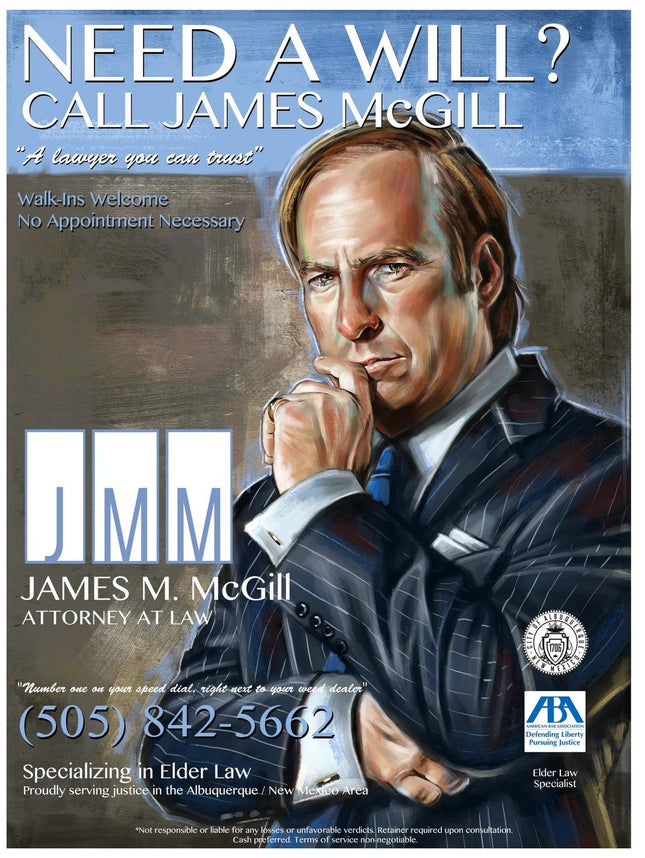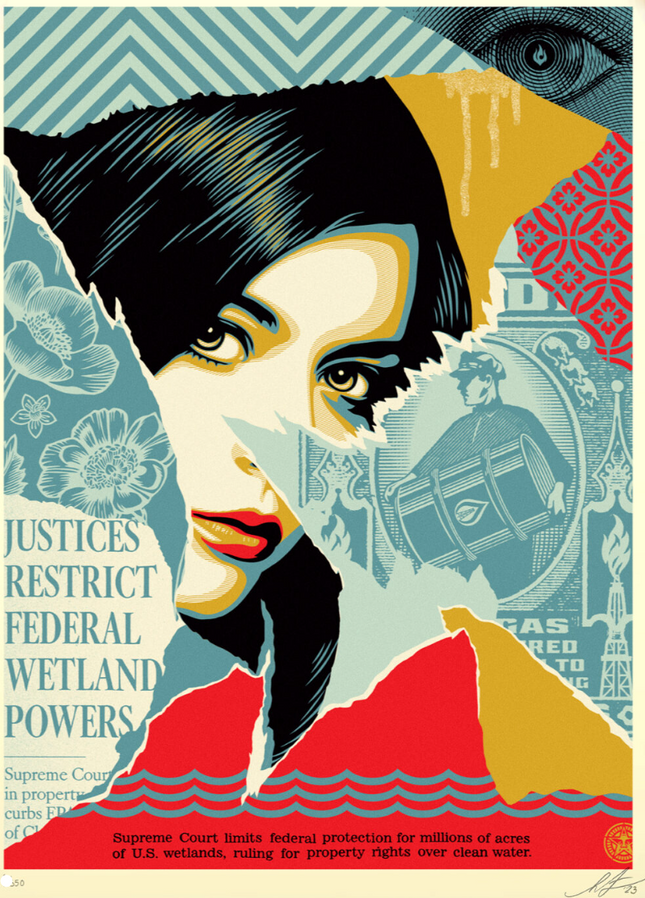Law

Robert Bruno A Lawyer you can TRust AP Giclee Print by Robert Bruno
A Lawyer you can TRust Limited Edition Giclee Print on Fine Art Paper by Robert Bruno counter-culture street artist art. AP Artist Proof. A satirical tribute to Saul Goodman and 'Better Call Saul' the Breaking Bad spinoff TV show. Limited Edition Fine Art Giclee Print AP Edition of 25 9' in. x 12' in. Signed & Numbered
$99.00

Shepard Fairey- OBEY Wetland Powers Silkscreen Print by Shepard Fairey- OBEY
Wetland Powers Silkscreen Print by Shepard Fairey- OBEY Hand-Pulled on Cream Speckletone Fine Art Paper Limited Edition Artwork Obey Pop Culture Artist. 2023 Signed & Numbered Limited Edition of 550 Artwork Size 18x24 Silkscreen Print "This Wetland Powers print examines the repercussions of a Supreme Court largely in the pockets of big oil. The government is supposed to create the greatest good for the greatest number of people. Still, the conservative justices in the current Supreme Court have put the agendas of big oil and wealthy property owners ahead of safe and clean water for the citizenry. The concept of "common assets"… no one owns resources like air and water and needs to be protected for the benefit of all, seems lost on many people in business and government. It is up to us as voters to elect representatives who put the needs of the citizens first. The Supreme Court makeup is always important to consider when voting for our president since the sitting president selects appointees for Supreme Court justices." -Shepard Fairey- OBEY Shepard Fairey's "Wetland Powers": A Statement in Street Pop Art In street pop art, Shepard Fairey stands as a figure of monumental influence; his work is often intertwined with solid socio-political messages. The "Wetland Powers" silkscreen print by Shepard Fairey, also known as OBEY, is a striking example of his commitment to merging art with activism. Released in 2023, this limited edition piece, hand-pulled on cream speckletone fine art paper, is more than a visually arresting image; it's a conduit for a critical conversation about environmental justice and governance. Dissecting "Wetland Powers" by Shepard Fairey The artwork, sized at 18x24 inches, is part of a limited edition of 550 signed and numbered prints. In typical Fairey fashion, the piece combines a bold aesthetic with a message that challenges viewers to consider the impact of political decisions on the environment. The imagery features a female figure with elements that suggest a connection to nature and its defense. Fairey's work is known for its layered visual language; every element serves a symbolic purpose, and "Wetland Powers" is no exception. Environmental Advocacy through Art In "Wetland Powers," Fairey addresses the contentious issue of land rights versus environmental protection, particularly highlighting the Supreme Court's role in shaping the fate of U.S. wetlands. The print serves as a commentary on the court's decisions that Fairey perceives as favoring corporate interests over public environmental health. Through this piece, Fairey expresses his belief in safeguarding common assets — air, water, and land — for the collective good. The Cultural Resonance of Fairey's Work Shepard Fairey's art has always resonated with a broad audience, and his Obey campaign has become a cultural phenomenon. With "Wetland Powers," Fairey continues to tap into the collective consciousness, using his art as a platform to advocate for ecological and social responsibility. The work underscores the power of street pop art to transcend the canvas and become a vehicle for change, urging citizens to reflect on their role as voters and to elect leaders who prioritize the welfare of all. "Wetland Powers" is a testament to Shepard Fairey's enduring role as an artist at the forefront of street pop and graffiti artwork. His ability to address pressing global issues through compelling imagery cements his status as an artist dedicated to the intersection of art and advocacy. As a limited edition print, "Wetland Powers" represents Fairey's artistic prowess and embodies the spirit of street art as a form of engaged public discourse.
$432.00


